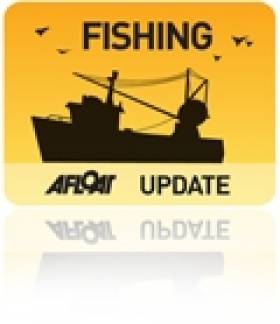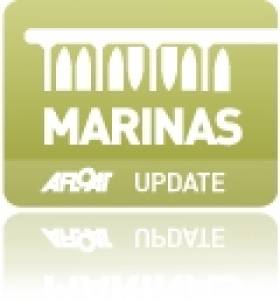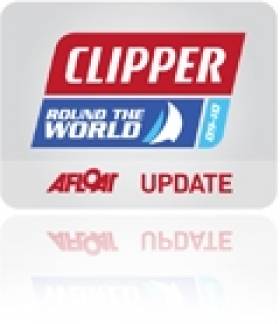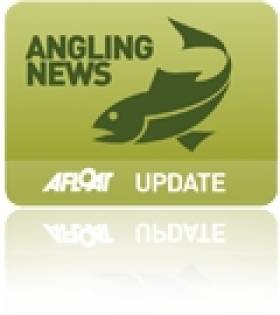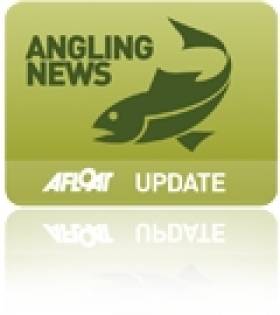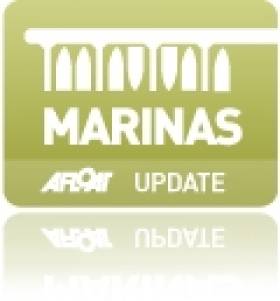Displaying items by tag: foyle
Oyster Beds to Reopen On The Foyle
#oysters – Minister of State at the Department of Communications, Energy and Natural Resources, Joe McHugh T.D. and the North's Agriculture Minister Michelle O'Neill MLA, jointly welcomed the decision by the Loughs Agency to re-open two of the six main oyster fishing beds in Lough Foyle which had been closed for the last number of weeks.
Minister McHugh said: "The decision to partially re-open the beds from 15 to 19 December 2014 will create potential opportunity to catch up to an additional 25 tonnes (up to a value of €125,000). I believe that the Agency has achieved a good balance between economic opportunity for local fishermen with a dividend for the local communities and the conservation imperative".
He added "I want to emphasise that sustainability and safeguarding this natural resource in Lough Foyle are the shared responsibilities of all stakeholders, including the licensed fishermen."
Minister O'Neill said: "Whilst I appreciate the importance of Management interventions to conserve and maintain oyster stocks, I am mindful of the impact that closure of the oyster beds has had on the livelihood of local oystermen particularly in the run-up to Christmas.
"Looking to the future, I am hopeful that there will be constructive engagement between the Agency and local fishermen on a range of issues that will safeguard the future of the Native Oyster Fishery on Lough Foyle.
Ministers had jointly raised the issue of the closure of the oyster beds at the North South Ministerial Council Aquaculture and Marine Sectoral Meeting in Armagh last Friday when they asked the Agency to review its decision to close the main oyster beds.
The Ministers pointed out the need to strike a balance between the socio-economic benefits for the Foyle Oyster Fishermen and the scientific evidence to support the long term sustainability of the Native Oyster Fishery on Lough Foyle.
Both Ministers thanked the Chairman, Chief Executive and the Loughs Agency staff for efforts in reaching this decision.
Fanfare in Derry as New Marina Officially Opened
#IRISH MARINAS - Five months after hosting the Clipper Round the World yacht race this summer, the new marina at Derry-Londonderry has been officially opened to much fanfare.
The Belfast Telegraph reports on the weekend's celebrations, which welcomed the return of the city's entry in the world-renowned yacht race.
Derry-Londonderry's challenge will soon be featured in the Discovery Channel TV documentary series Against the Tide, according to the Derry Journal.
Speaking at the launch event, Foyle Port CEO Brian McGrath hailed its "state-of-the-art facilities for hosting maritime events".
The new marina is a joint initiative by the Loughs Agency and Cruise Initiative and is maintained by Foyle Port.
Clipper Yacht Race Says Farewell to the Foyle
#clipper – The river will be the arena this weekend for a maritime spectacle never before seen in the city, as the flotilla of Clipper Round the Yacht vessels say their final farewell to the River Foyle and the host post of Derry~Londonderry.
The ten yachts will depart the city on Saturday in a spectacular Parade of Sail, before heading to Greencastle, where they will begin the penultimate race in their 40,000 mile journey. Thousands are expected to turn out to watch the Clippers line-up for their spectacular Parade of Sail with activities commencing on the Quay from 12noon as the yachts prepare to sail from the Quay at 1pm, in what will be an emotional journey for the Derry~Londonderry team as they once again set off from their home port.
The yachts will sail down the River Foyle for the official race start at Greencastle, with live links to the city over the duration of the day so that you can watch the official race start live on quay at 5pm.
The crews have enjoyed a homecoming welcome to remember since their arrival last weekend, with 1,000's along the quay daily enjoying the celebrations and there are still two days to go!! Although the Clippers might be moving on, the party will continue in full swing until Sunday. After the Parade of Sail on Saturday, the Zapcats will be making waves with some high speed action on the river. Reaching speeds of 50mph, these little boats will be performing some breathtaking stunts, with 3G turns and six foot jumps.
"Zapcats go where most other boats dare not," said Mike Sanford, race organiser. "It's fast, it's furious and it's great fun for all the family. Safety is paramount, but I admit that we really do push things to the limit!
"We have 16 competitors coming from all over England, joining teams from Belfast and the Republic. We've already scoped out the lough and are looking forward to two days of challenging racing, after the Clipper fleet departs."
The Zapcat Grand Prix has been compared to motorcross on water, and promises to keep audiences glued to their death defying antics as the two man crews battle it out over short circuits near the Peace Bridge on Saturday from 3pm, and on Sunday from 12noon-3pm.
Throughout the day visits to the stunning Earl of Pembroke Tall Ship as well as the impressive naval vessels lining the quay, will be running from 10am-5.30pm. The Continental Market will be thronged with foodies throughout the weekend with an exciting array of dishes and goods from home and abroad on offer.
The Quayside itself will be buzzing with activity, with music, song and dance at the Quayside stage. And youngsters can get arty in the Creativity Zone, where there will be a full programme of art workshops, magic shows and documentary screenings.
The festival will also feature a series of fascinating environmental exhibitions, as well as the opportunity to trace your family roots and explore the city's maritime heritage in the Environmental and Heritage Zone. And don't forget the festival finale and water display between 4-6pm on Sunday 08th July.
For ease of access, don't forget we have the Clipper Event Park n'Ride at Templemore and event park n'stride at Magee College, event car parking is also available in all city centre car parks.
The Clipper 11-12 Maritime and Home Coming Festival is organised by Derry City Council in partnership with Londonderry Port. It is supported by Northern Ireland Tourist Board, MalinWaters as part of the Sail West Project marine tourism initiative, part financed by the European Union's European Regional Development Fund through INTERREG IVA Cross-Border Programme, Invest Northern Ireland, Loughs Agency, Ilex URC, FG Wilson, Diageo and event partners Translink.
Life Patrol: On The Banks of The Foyle
#Maritime TV Programmes – A new series Life Patrol: On The Banks Of The Foyle starts tomorrow night at 10.35pm on BBC 1 Northern Ireland.
The series gets exclusive access following the work of the Foyle Search and Rescue, the Derry/Londonderry based charity run by volunteers as they patrol the banks of the Foyle, one of the fastest flowing rivers in Europe.
Life Patrol was filmed during the Christmas/New Year period of 2011/12 and the one-hour documentary brings viewers out on patrol with the volunteers who are trained in suicide intervention. They need to call upon all their training as they are faced with highly charged emotional situations.
Des Henderson, who produced, filmed and directed the programme said: "Foyle Search and Rescue is a remarkable organisation. Sometimes you can forget these are unpaid volunteers. To see first hand what they do and the positive part they play in the local community makes you realise the important role they play in keeping people safe and saving lives on the Foyle".
He added: "I hope the programme will give viewers a real insight into the invaluable work they do and highlights their contribution when coming face-to-face with a social problem felt by many communities."
#ANGLING - Voluntary conservation measures have been put in place on the Foyle system for the current angling season to help shore up wild salmon numbers, The Irish Times reports.
The move is in response to a "worrying fall" in the numbers of adult salmon returning to Ireland's rivers this year - and comes just months after wild Atlantic salmon were spotted in the Tolka in Dublin for the first time in nearly 100 years.
These voluntary measures - which involve catch and release, early closure of some club waters and the imposition of sanctuary areas - are intended to reduce the overall salmon catch, thereby encouraging the spawning rate upstream.
The general public have also been asked to assist by not purchasing any wild salmon - and especially those from the Foyle system, as the purchase or sale of such salmon is an offence.
NI Anglers Take to Facebook to Save Their Salmon
#ANGLING - Northern Ireland river anglers are taking a novel approach to lobbying Stormont over salmon exploitation by harnessing the power of social networking.
According to the News Letter, the NoSalmonNets campaigners "have swapped their fishing rods for laptop computers", using Facebook to attract support for their campaign to bring an end to the offshore netting of wild salmon stocks.
As previously reported on Afloat.ie, Northern Ireland's Department of Culture, Arts and Leisure (DCAL) has called for a voluntary ban on offshore salmon fishing, following new research that shows a significant drop in their numbers in the North's rivers.
Seamus Donnelly of NoSalmonNets has welcomed DCAL's recent decision to stop issusing licences for commercial salmon nets that may "contravene European law" off Antrim's north coast, made in an effort to protect salmon stocks in the Foyle river system.
Donnelly explained that the campaign was borne from frustration at the apparent inaction by the NI Executive over the protection of salmon.
“One of the keys to our success has to be Facebook," he said. "The internet has an unlimited reach and we took advantage of that.”
The News Letter has more on the story HERE.
Waterfront Development Opportunities in Northern Ireland, Waterford
#WATERFRONT PROPERTY - A number of prime waterside development opportunities are up for grabs in Northern Ireland and Waterford.
North of the border, Northern Ireland Electricity (NIE) is currently seeking expressions of interest for three sites.
The first of these, in Belfast, is the site of the former Belfast West Power Station. The 16-acre site on McCaughey Road, close to the city centre, is currently zoned as employment/industry.
Further north on the shores of Belfast Lough is a 45-acre whiteland site adjacent to Kilroot Power Station in Carrickfergus. Both Kilroot and Belfast West will be available for lease only due to their strategic nature.
Also available are lands adjacent to Coolkeeragh Power Station, near Derry and the mouth of the Foyle. This 28-acre site is zoned as existing industry.
All three sites are restricted to generation or other electricity industry uses.
The closing date for expressions of interest is 12 noon on 20 February 2012. For more contact Savills Belfast at +44 (0) 28 9026 7820 or [email protected].
Meanwhile, in Waterford, estage agent Purcell Properties is guiding €1.5 million for an 18-acre landbank with extensive frontage on the Suir, less than a mile from the city centre.
The site at Newrath, previously used by Smurfit for plastic production, comprises mixed warehousing developed around 50 years ago.
The landbank is close to the new bridge connecting with the Waterford-Dublin motorway. Zoning of the site would allow mixed use including retail, light industrial and warehousing.
For more details contact Purcell Properties at 051 876 514 or [email protected].
New Mooring Facilities on River Foyle
Port Harbour master, Bill McCann says this is "positive step forward towards harnessing the potential of the River Foyle for tourism and commerce. The new cruise ship quay at Meadowbank, together with the new pontoon, add significantly to the marine facilities that we offer on the Foyle, which is particularly important with the Clipper Round the World Yacht Race calling at Derry in 2012."
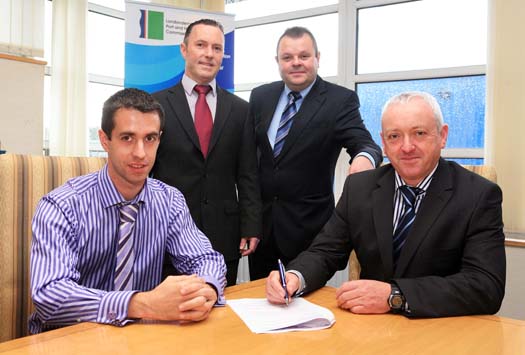
Londonderry Port and Harbour Commissioners sign contract for development of Foyle cruise ship quay and pontoon
Chief executive of the Loughs Agency, Derick Anderson has expressed his enthusiasm for a project "that promises to aid the development of tourism along the Foyle and in the north-west generally, including Inishowen. The new water front infrastructure may reveal fresh opportunities for those planning events in the region, for instance, City of Culture in 2013. The Loughs Agency is optimistic that the project will optimise potential for water based events and activity and help bring the river to life in Londonderry's city centre."
Shaun Henry from the Special EU Programmes Body highlighted the strategic importance of this initiative for the region saying: "This project will allow the local tourism sector to draw on the natural environment of the region and its natural tourism resources. This is likely to attract a higher number of domestic and overseas visitors, contributing to improving the performance of the overall tourism industry, one of the key priorities of the INTERREG IVA Programme. By increasing the offer for high quality marine facilities in the area, it also builds on the strong cultural and economic linkages that exist between western Scotland, Northern Ireland and the west coast of Ireland, where marine tourism is a sector in expansion."
The project is supported by funds from the European Regional Development Fund. The Loughs Agency is lead partner in an Interreg IV programme that secured this funding for some much needed infrastructure. Details about marine leisure on the Foyle on www.loughs-agency.org or www.londonderryport.com
Lough Swilly Yacht Club Launch 2010 Season
‘Lough Swilly Yacht Club successfully launched the 2010 boating season on Sunday. Commodore Paul McSorley welcomed members attending The Opening Day Lunch at the LSYC Clubhouse in Fahan, Co Donegal. New members along with long standing members enjoyed a splendid lunch with entertainment provided by local traditional musicians. Many of the young members were able to take the opportunity to launch the Club’s recently purchased Pico’s, which will be used for the Learn To Sail Courses to be run later in the summer.
In his welcome address, Paul McSorley, said, ‘We are delighted at the turn out today and welcome all, in particular our guests; Malcolm Houston, RNLI, Rosin McAnallen, Ocean Youth Trust and Karena Hanley, Rathmullan Sail Club. We look forward to a busy sailing season with our series of races, as well as many open events including, Tory Island, Foyle Days, and Swilly Worlds Regatta. New this season will be our WOW - ‘Women on Water’ Day, which is an initiative started by Irish Sailing Association to encourage more female participation in this sport.’
Come and Try It
Paul added,’The Club is hosting an Open Evening on Thursday, May 13, when the facilities will be available for those interested to try it for themselves. So bring friends, colleagues and give them a chance to enjoy the thrills of sailing on this spectacular lough’.
Key Events
Tory Island Race June 5
Foyle Days June 12/13
WoW Day June 20
Melmore July 10
Swilly World Regatta July 31 – August 2
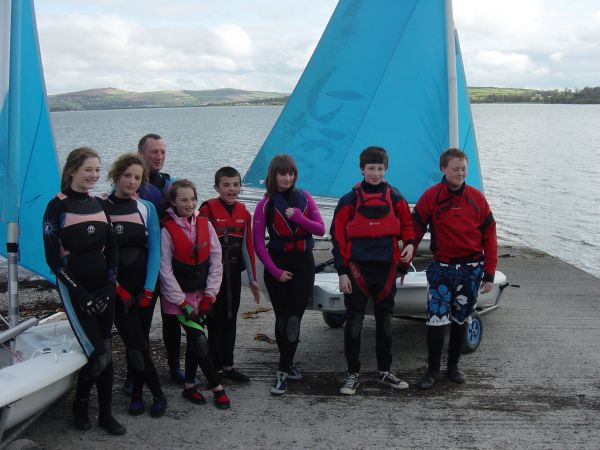
Commodore of Lough Swilly Yacht Club ( ) launching the Club’s new Pico Dinghies along with some of the young members at the Open Day held in Fahan, Co Donegal
For further information, check www.loughswillyyc.com or e-mail [email protected].


























